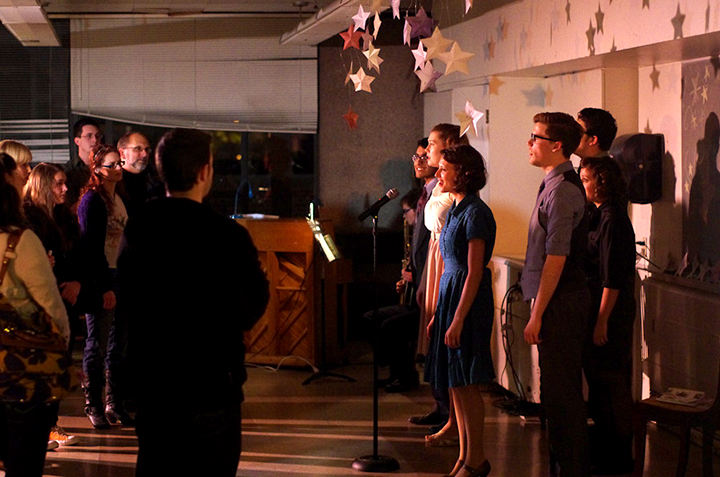M.F.A. directing student Vanessa Stalling used a Friends of the Arts grant to represent Illinois State University at the Association for Theatre in Higher Education 2013 Conference, held in August in Orlando, Florida. There she organized a panel about the methods she uses to teach students how to create original, site-specific work.
Stalling, a veteran director of the Chicago theater scene, had taught these techniques to Illinois State theatre majors and helped them produce An Experience of Lost Things, which was inspired by The Civilians’ Gone Missing. For this work, students used different parts of the campus as the setting for a performance that was based on interviews the students did with relatives and friends about things they had lost and never found.
In the following Q-and-A, Stalling talks about the conference, creating site-specific works, and the importance of the Friends of the Arts grants.
Why did you come to Illinois State University?
I came to Illinois State University because I wanted to have a really good combination of both theater history and theory, kind of the academic side, but as well being able to do hands-on practice. Illinois State University was one of the main programs that offered more hands-on experience than the other graduate programs. So for example, once I leave ISU, I will have done five full productions as well as tons of in-class scene work, hands-on work, where in a lot of other programs you might get only two or three.
Tell me a little bit about the project and what was the forum for your work?
Previously to graduate studies, I worked at a theater company in Chicago called Redmoon for about 10 years, and mostly recently as the associate artistic director. And Redmoon’s work, we kind of phrase it as, unexpected performance in unexpected places. So we do a lot of site-specific, original, also known as devised, work. Undergraduates, particularly at the School of Theatre at ISU, really wanted to gain a better understanding of how they might create that type of work as well. So I offered to teach them through a series of workshops. And then I realized, well, I might have the opportunity, through these workshops, to start to develop a type of pedagogy for this work: How would I teach theater students to create the type of work that I was making in Chicago? Then I thought, This might be a really great opportunity to go to the conference and present a panel about the workshops that I hosted at ISU and to kind of serve as a representative of the M.F.A. directing program there. So that is how it all came about.
Can you get into the specifics about the techniques?
Essentially, it’s trying to teach students how to look at their environment and look at, essentially, the space. And that includes the sound of the environment, the light of the environment, the bodies, and then the ensemble. And essentially how to recognize, and I call it, outside information: How are they using their environments and the people in the room to create a performance, to create a story to tell? That was one of the essential things I was teaching the students.
Why was the Friends of the Arts grant important to your trip down to the conference?
It was just a great way to support because typically people that go to the conference have the school that they are a professor of—will pay for them to go to the conference. But being a graduate student we don’t have access to resources like that. So Friends of the Arts is really critical in being able to provide me the opportunity to go and represent ISU.
What projects are you working on now?
I will be directing Mrs. Packard in the spring; it’s going to be at the CPA (Center for the Performing Arts). It’s a true story; it’s written by Emily Mann. And it’s about Mrs. Packard, who is a woman from Illinois. In the late 1800s, her husband had basically imprisoned her in the Jacksonville insane asylum, even though she wasn’t insane. Essentially there was a law that husbands could put their wives and children in the asylum without having to prove a real need for this. They could just say, “My wife is not sane.” What really was going on was she was having a difference of opinion in regards to religious beliefs, and he was sick of hearing them. So he put her in an insane asylum. There was a trial in Manteno, Illinois, where then she was able to fight for her freedom and get herself declared legally sane as well then eventually change the laws. So she is an amazing Illinois woman and it’s kind of cool to give folks in that community, in such close proximity to where the actual events happened, a show about her.
What do you plan to do after graduation?
Another great benefit of being at ISU is that I have had the great opportunity to teach. I hope that I can be a professor in a tenure-track position at a university teaching about theater, directing productions, as well continuing to freelance as a professional director.


